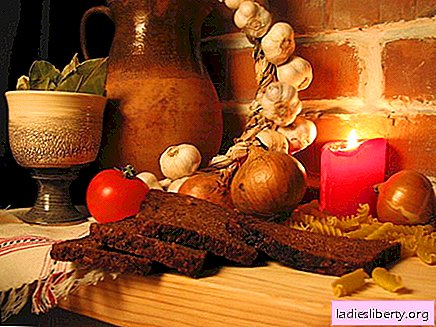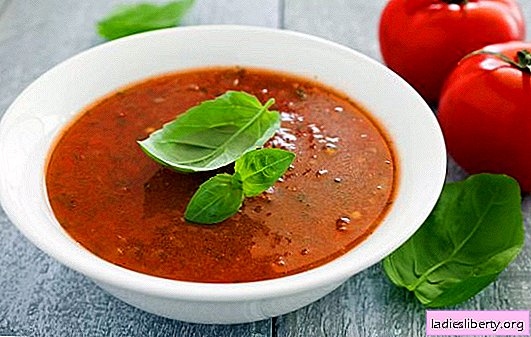
Low calorie heart diet - This is a special diet, the main principle of which is to reduce the load on the heart.
The diet is designed in such a way that it is suitable for an absolutely healthy person. The advantage is that if you follow simple rules, you can reduce the amount of calories consumed, lower cholesterol, which will help reduce body weight.
In a week, it takes from 1.5 to 2 kg, while a person does not feel weakness and discomfort. The heart rate calms down, pressure normalizes and some other symptoms of the disease disappear.
What foods does the diet allow for the cardiovascular system
When organizing the diet, it is important to include the right foods in it that will not overload the body with "empty" calories and will bring maximum benefits.
1. Vegetables and fruits, especially seasonal ones, are the basis of the diet for heart failure, as they have a lot of useful macro and microelements. Cooked salads are allowed to season with lemon juice or natural yogurt.
2. Products that normalize heart function:
• bananas, greens, melon, watermelon (rich in potassium);
• brown rice, barley, spinach (rich in vitamins B);
• oatmeal, buckwheat, seafood (contain magnesium).
3. Dairy products of low fat content.
4. Low-fat varieties of fish and meat. Preference is given to chicken without skin, rabbit and turkey meat. You can cook foods in any way, just do not fry, because a lot of oil is absorbed during frying, which increases the overall energy value of the dish.
5. Cod liver, flax seeds - contain omega-3.
What foods the diet forbids for the cardiovascular system
There is a list of "taboos" for those who have heart problems. These products are poorly absorbed by the body, are "empty" calories that do not bring benefits and do not contain anything useful.
1. Products that contain a lot of salt. These are pickled vegetables, sausages, smoked meats.
2. Drinks that excite the nervous system - hot chocolate, strong tea, coffee.
3. Too greasy broths (on chicken with skin, pork).
4. Mayonnaise and other high-calorie sauces. In extreme cases, it is allowed to use the sauce if it was cooked at home. However, previously this nuance is discussed with the attending physician.
5. Puff pastry and pastry, pastries made from premium flour.
When forming a diet menu for heart failure, the listed products are strictly prohibited, otherwise the method will not give a result.
Diet menu for heart failure: table number 10 and table number 10A
Important to understand that medical nutrition is not one diet. The nutritional regime is based on the severity of the disease. In severe form, table number 10A is assigned. All dishes that enter here are prepared only in chopped form. The maximum daily calorie intake is 1900 Kcal.
In case of mild heart failure, table No. 10 is assigned. Daily calories - 2500 Kcal. This is a complete diet that allows a person to receive all the minerals and vitamins that are important for the body.
Observations showed that the diet for heart failure according to the Karelian regimen favorably affects the patient. Dropsy of the abdominal and thoracic cavities decreases, edema disappears and shortness of breath is minimized.
Table Menu No. 10A
1. 8:00 - breakfast. Suitable 50 grams of semolina, millet or rice porridge cooked in milk.
2. 11:00 - the first snack. 100 grams of broth of wild rose and one boiled egg (always soft-boiled).
3. 14:00 - lunch. 100 grams of mashed potatoes and 50 grams of finely chopped steam patties. Or you can take a piece of boiled meat, the main thing is to grind it.
4. 16:00 - 30 grams of soaked prunes.
5. 19:00 - dinner. 75 grams of cottage cheese, rubbed with sugar, or fish soufflé.
6. Before going to bed, 100 grams of broth of wild rose or the same amount of hot milk with honey is recommended.
Table menu number 10
1. 8:00 - breakfast. Rice or buckwheat mashed porridge cooked in milk or 100 grams of cottage cheese with sour cream. Drinking breakfast is allowed with tea with jam.
2. 11:00 - the first snack. 100 grams mashed with sour cream carrots.
3. 14:00 - lunch. Vegetarian borscht.
4. 16:00 - the second snack. 100 ml of rosehip decoction or one medium apple. The main thing is not a green variety, since such a fruit is very sour and can cause bloating. Sweet red or yellow apples will do.
5. 19:00 - dinner. 100 grams of boiled noodles, preferably home-cooked. A piece of boiled fish or potato steam patties.
6. Before going to bed, it’s good to drink some milk with honey.
Important! A heart diet at home can only be prescribed by the attending physician, based on the individual characteristics of the course of the disease. In addition to proper nutrition, the doctor can also prescribe medication and minimal exercise.
The duration of the diet, presented by table No. 10 and No. 10A, also depends on the degree of complexity of the disease. If significant improvements are noticeable in passing through both stages, the patient is transferred to a normal diet. The main thing is to continue to exclude products that are on the taboo list from your daily diet.
Diet for cardiovascular diseases: the basic rules and nuances of the diet
Tasty and healthy to eat, without overloading your heart, is quite possible. The main thing is to follow simple rules and know some important nuances.
1. In no case should you overeat. It has been proven that the stomach can accommodate as much food as it fits in two folded palms of a person. Everything else is surplus. A diet for the cardiovascular system implies that you need to eat 6-7 times a day in small portions (100 grams maximum).
2. Products that a person eats every day already contain salt. Add food during cooking is undesirable. Excess seasoning in food negatively affects the work of the heart, also contributes to overweight.
3. Spicy foods from the diet must be completely eliminated. Even garlic, which is considered useful, can be consumed only after heat treatment. For example, put out a piece of meat with it (or steam it). Green onions are cooked in the same way.
4. You can not drink drinks that "excite" the body. These include strong teas and coffee. Such drinks are generally not recommended to humans, let alone those who have heart problems. It is better to give preference to natural juices and compotes. Tea is not prohibited, the main thing is that it is not strong.
5. Vegetable oil can not be consumed much. It would be better to season salads with natural yogurt - this is more useful and will not harm the figure.
6. Diet for heart failure prohibits drinking water in large quantities. The maximum that you can afford is 1 liter of fluid per day.
7. It must be remembered that being overweight is always a burden on the heart. It is for this reason that it is very important to take care of yourself, not to allow a set of extra pounds. If you eat right, perform minimal physical exercises, then you will not have to lose weight later.
8. There must be foods in the diet that contain iodine, magnesium and potassium. In the summer, micronutrients can be obtained from fresh vegetables and fruits. In winter, for prophylaxis, it is recommended to purchase multivitamin complexes in a pharmacy.
9. You can’t eat 3 hours before going to bed, otherwise the stomach will not have time to process everything and again this will be an extra load on the heart muscles.
10. Once a week, it is recommended to do an unloading day to cleanse the body of toxins and toxins. It is necessary to discuss daily monoration with your doctor.
A heart diet is a principle of nutrition that a completely healthy person can sometimes follow for prevention. A balanced diet is designed in such a way that improves metabolic and digestive processes, stimulates the normalization of intestinal motility. Also, after a week it takes 2-3 kg of excess weight, the load on the heart is reduced, thereby improving the general condition of a person.











